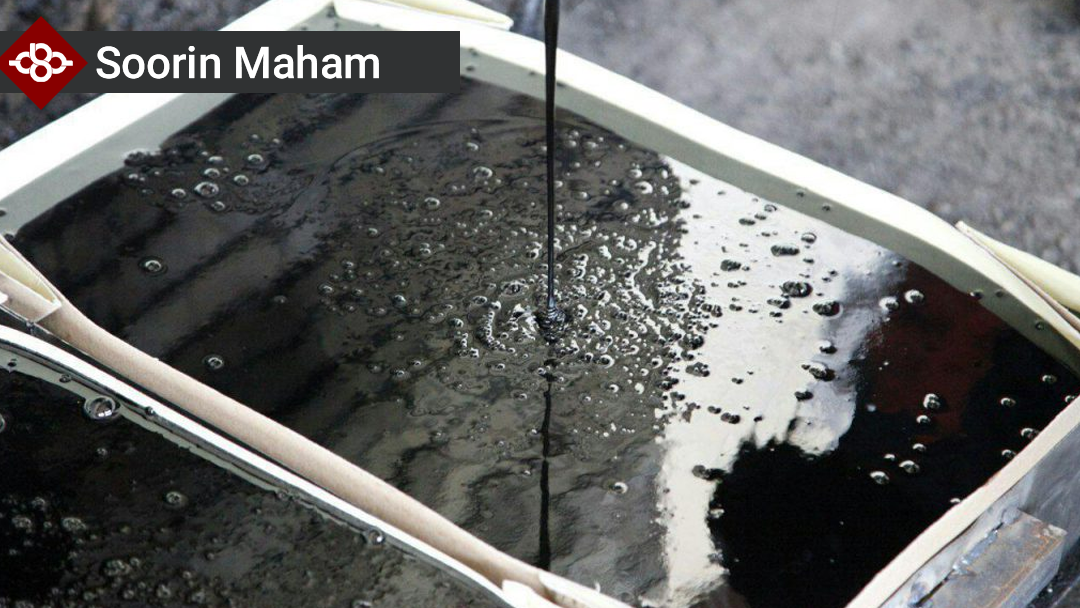Cutback Bitumen is a type of bituminous binder widely used in various construction and maintenance projects. It is a mixture of bitumen and a volatile solvent, which allows for easier application and handling. Here, we will delve into the characteristics of cutback bitumen, its different types, and its applications in the construction industry.
Characteristics of Cutback Bitumen
- Viscosity and Consistency: Cutback bitumen has a lower viscosity compared to straight bitumen, making it easier to work with. The addition of a solvent reduces its stiffness, allowing for better coating and penetration.
- Curing Time: The curing time of cutback bitumen depends on the type of solvent used. Rapid-curing cutback bitumen contains solvents that evaporate quickly, resulting in faster curing times. Slow-curing cutback bitumen, on the other hand, contains solvents with slower evaporation rates, allowing for a longer working time.
- Environmental Impact: Cutback bitumen contains volatile solvents that release harmful emissions into the atmosphere during application. Therefore, it is important to follow proper safety precautions and guidelines to minimize the environmental impact.
Types of Cutback Bitumen
- Rapid-Curing Cutback Bitumen: Commonly used in surface treatment and prime coating applications. The solvents evaporate quickly, allowing for faster drying times.
- Medium-Curing Cutback Bitumen: Offers a balance between rapid-curing and slow-curing variants. Suitable for various applications such as tack coats, seal coats, and fog seals.
- Slow-Curing Cutback Bitumen: Used in applications that require a longer working time and extended curing period. Commonly employed in surface dressing, slurry sealing, and grouting operations.
Applications of Cutback Bitumen
- Road Construction and Maintenance: Extensively used in road construction and maintenance projects. It serves as a binder for asphalt mixtures, providing adhesive properties and ensuring the durability and longevity of the road surface. It is also used for surface treatments, such as prime coating, tack coats, and seal coats, to enhance adhesion between layers and protect the road surface from moisture and aging.
- Waterproofing: An excellent choice for waterproofing applications. It is used to seal and protect various structures, including roofs, foundations, and basements. The low viscosity of cutback bitumen allows for easy application and ensures effective coverage, providing a reliable barrier against water infiltration.
Cutback bitumen's versatility and ease of application make it a valuable material in the construction industry. However, its environmental impact due to volatile solvents necessitates careful handling and adherence to safety guidelines.
Manufacturing process of cutback bitumen:
- Bitumen Heating: The process begins by heating the bitumen to a temperature range of 100-200°C. This step is crucial as it reduces the viscosity of the bitumen, making it easier to mix with the solvent.
- Solvent Addition: After heating, a specific type of solvent is added to the bitumen. The choice of solvent (such as kerosene, naphtha, or diesel oil) depends on the desired curing rate and application. The solvent temporarily reduces the viscosity of the bitumen.
- Mixing: The heated bitumen and solvent are thoroughly mixed to ensure a uniform blend. This step is essential for achieving the desired consistency and performance characteristics of the cutback bitumen.
- Cooling and Storage: Once the mixing is complete, the cutback bitumen is cooled and stored in appropriate containers. It remains in a liquid state at room temperature, making it easy to transport and apply.
While cutback bitumen is versatile and easy to use, it does have environmental impacts due to the volatile organic compounds (VOCs) released during the evaporation of solvents. Therefore, proper safety measures and guidelines should be followed to minimize these effects.
